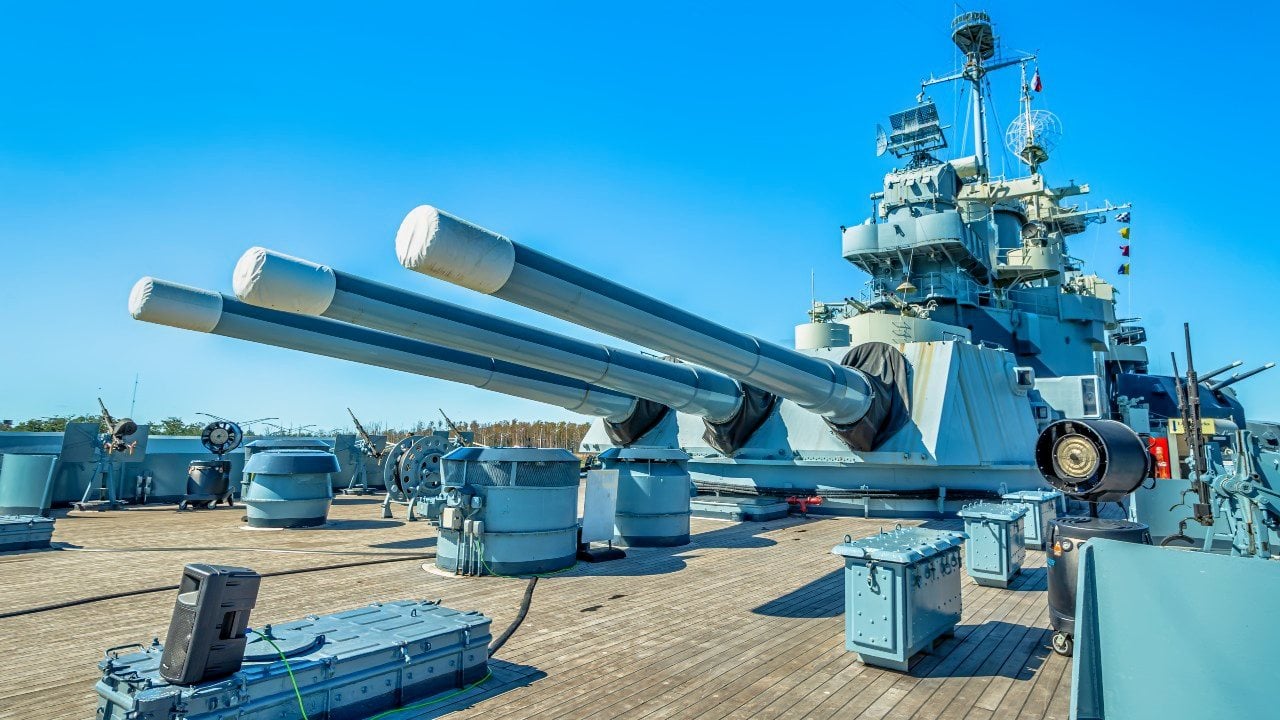U.S. Navy Battleship USS North Carolina Is Fighting a Race Against Time
The USS North Carolina, a pivotal asset of the U.S. Navy during World War II, was the lead ship of her namesake class and was commissioned in April 1941. Known as a "fast battleship," she was designed to escort aircraft carriers and engage in prolonged combat.
Summary: The USS North Carolina, a pivotal asset of the U.S. Navy during World War II, was the lead ship of her namesake class and was commissioned in April 1941. Known as a "fast battleship," she was designed to escort aircraft carriers and engage in prolonged combat. Throughout her service, the North Carolina earned a reputation for resilience and firepower, notably participating in the Battle of Guadalcanal.
-She was armed with nine 16-inch guns capable of firing 2,700-pound shells and was protected by an extensive array of anti-aircraft guns. Despite multiple reports of her sinking, the North Carolina survived all engagements, including a direct hit by a Japanese torpedo. After her decommission in 1947, she garnered 15 battle stars, making her the most decorated battleship in U.S. history.
-Avoiding the fate of being scrapped, she was preserved as a museum ship in Wilmington, North Carolina since 1962. Today, the USS North Carolina continues to be a significant historical exhibit, although preserving her from the ravages of time and environment remains a challenging endeavor.
USS North Carolina: A Legacy of Valor and Preservation
The USS North Carolina was 35,000 tons of massive destruction. The namesake of her battleship class, she was commissioned by the United States Navy in April 1941, just seven months before the Japanese Empire launched their dastardly attack on Pearl Harbor, decimated the US Navy’s Pacific Fleet in port there, and effectively ended the age of the battleship.
The battleship was billed as the US Navy’s first “fast battleship” (which is similar to how the British Royal Navy’s legendary HMS Hood battlecruiser was described). It was designed to escort aircraft carriers and “hold its own in sustained combat.”
A Legendary Battleship
She carried a 1,800-man crew and possessed 45 anti-aircraft guns along with 18, .50-caliber machine guns. The USS North Carolina had a maximum cruising speed of around 32 miles per hour and a range of 17,450 miles. In fact, this legendary boat was sent immediately into the Pacific Theater of the Second World War following Pearl Harbor. North Carolina was deployed to escort the Navy’s aircraft carriers as they pressed forward with their island-hopping strategy.
She partook in the Battle of Guadalcanal.
With North Carolina’s nine, 16-inch guns, this boat was ready to fire 2,700-pound shells at enemy targets. She was ultimately decommissioned in 1947, but this boat racked an impressive service record in its short lifespan. North Carolina became the most decorated battleship in history, earning a whopping 15 battle stars.
Unlike the HMS Hood, which was Britain’s version of this warship, the North Carolina came across as being unsinkable (the Hood infamously went down in three minutes with all but three crew dying in the process).
In fact, the North Carolina survived many near-misses and even withstood being hit by a Japanese torpedo. On six different occasions, Japan claimed to have sunk this naval gem. Each time, they were proven wrong.
Saving the North Carolina
Just as the legendary battlewagon was set to be turned to scrap after it spent a little time in the Navy’s reserve fleet, a successful campaign was mounted that ensured the famous warship would be preserved as a museum. Today, it is one of the most popular museum warships in the country. Even during the COVID pandemic, when everyone was forced to go remote, the battleship had several activities planned.

Since 1962, the North Carolina has been a museum ship in Wilmington, North Carolina. It is a comprehensive, well-preserved warship that has stunned audiences of multiple generations.
At the same time, after 80 years, the North Carolina is deteriorating, despite the love and care she’s received as a museum ship. It remains to be seen how much longer the great ship can be preserved, but its caretakers are fighting to preserve it.

Interestingly, the warship is so large, that it can never be moved again which is a problem because some have suggested moving the warship to get it away from the corrosive effects of the water. That limits the engineering solutions for repairing the aging ship. One thing is clear, though: it is in the national interest to preserve the memory and legacy of this warship, which is what’s being undertaken.
About the Author
Brandon J. Weichert, a National Interest national security analyst, is a former Congressional staffer and geopolitical analyst who is a contributor at The Washington Times, the Asia Times, and The-Pipeline. He is the author of Winning Space: How America Remains a Superpower, Biohacked: China’s Race to Control Life, and The Shadow War: Iran’s Quest for Supremacy. His next book, A Disaster of Our Own Making: How the West Lost Ukraine, is due October 22 from Encounter Books. Weichert can be followed via Twitter @WeTheBrandon.


